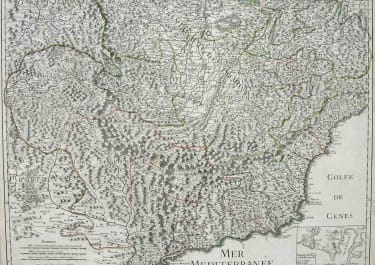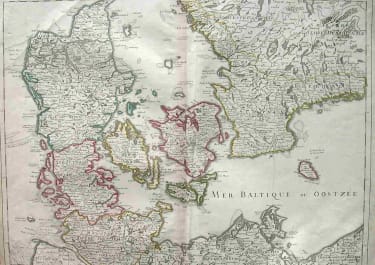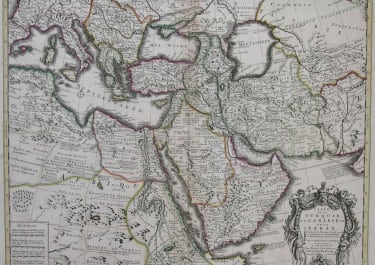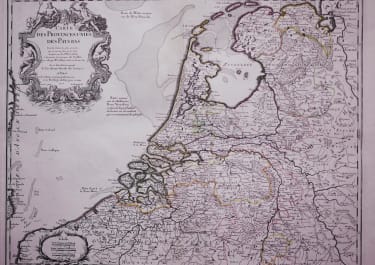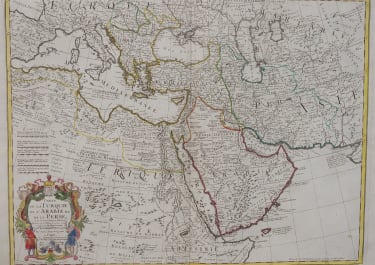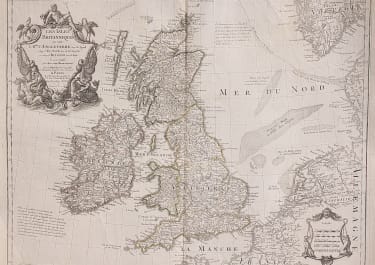
HOLLAND CARTE DES PROVINCES UNIES DES PAYS BAS
£245
Very fine large decorative early 18th century engraved folio sheet map with original outline hand color. Decorative large cartouche with neptune and Apollo sitting at the top, two cherubs at the bottom.
DeLisle is important as the first "scientific" cartographer who incorporated the most current information on exploration and topography into his maps.
This map is a straight reisue by Bauche in 1745, indicated only in lower tramline.
Printed on heavy paper, strong impression slight crease by centrefold.
Excellent condition.
code : M2678
Cartographer : DE L'ISLE Family
Date : 1702 / 1745 Paris
Size : 48*62 cms
availability : Available
Price : £245
Claude de l'Isle (1644-1720) was a geographer and historian working in Paris, but was overshadowed by his more famous son, Guillaume (1675-1726), who is probably the greatest figure in French cartography. Having learnt geography from his father, it is said that at the age of eight or nine he could draw maps to demonstrate ancient history. He studied mathematics and astronomy under J.D Cassini, where he received the grounding in scientific cartography, that is the hallmark of his work.
His first atlas was published in about 1700, in 1702 he was elected a member of the Academie Royale des Sciences, and in 1718 he became 'Premier Geographe du Roi'. His maps of the newly explored parts of the world reflect the most up-to-date information available and did not contain fanciful detail in the absence of solid information.
His work was important as marking a transition from the maps of the Dutch school, which were highly decorative and artistically-orientated, to a more scientific approach.
De L'Isle also played a prominent part in the recalculation of latitude and longitude, based on the most up-to-date celestial observations. His major contribution was in collating and incorporating this latitudinal and longitudinal information in his maps, setting a new standard of accuracy, quickly followed by many of his contemporaries. Guillaume De L'Isle's reputation was such that pirated versions appeared in many countries, most particularly by Chatelain and Covens and Mortier.
After his death in 1726 the business was continued by his nephew Philippe Buache, and subsequently by J. Dezauche.

